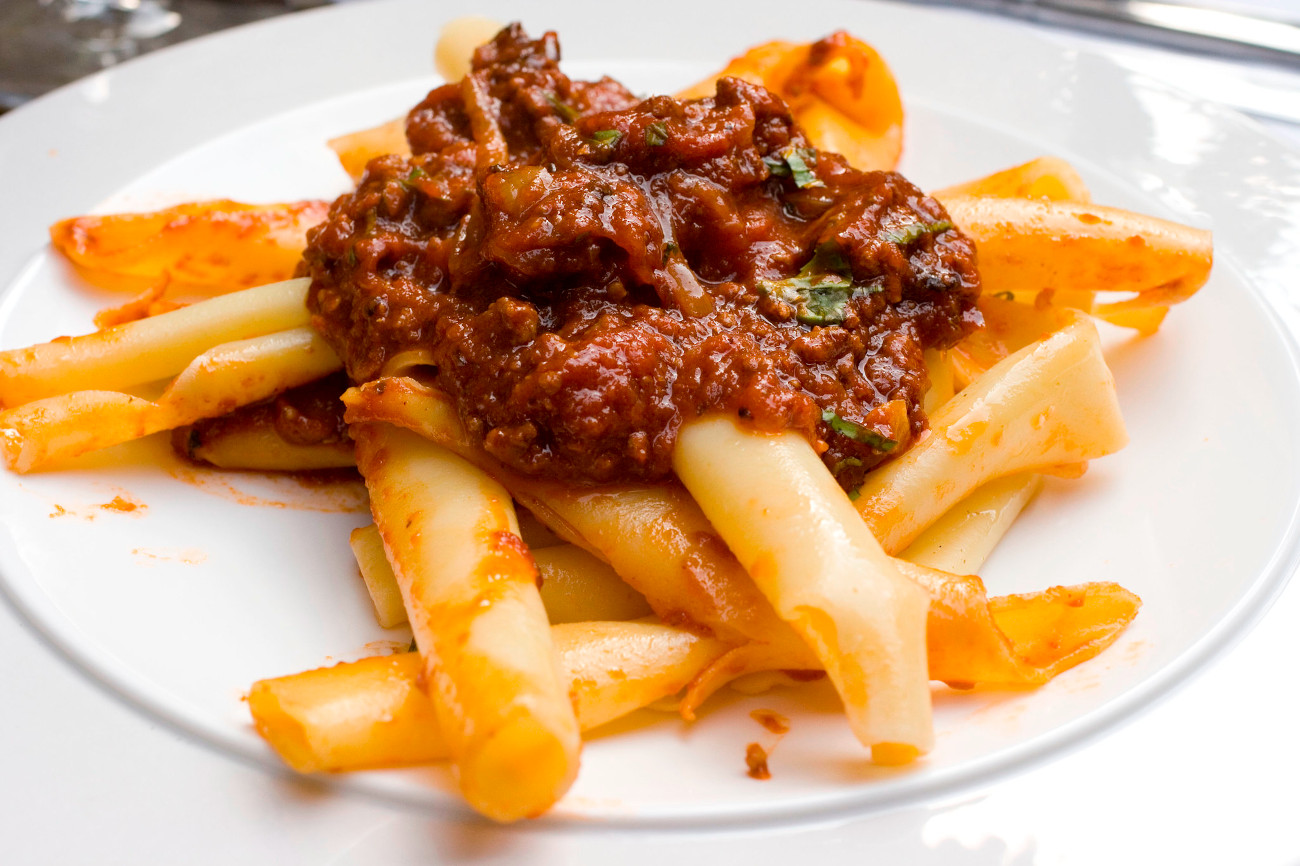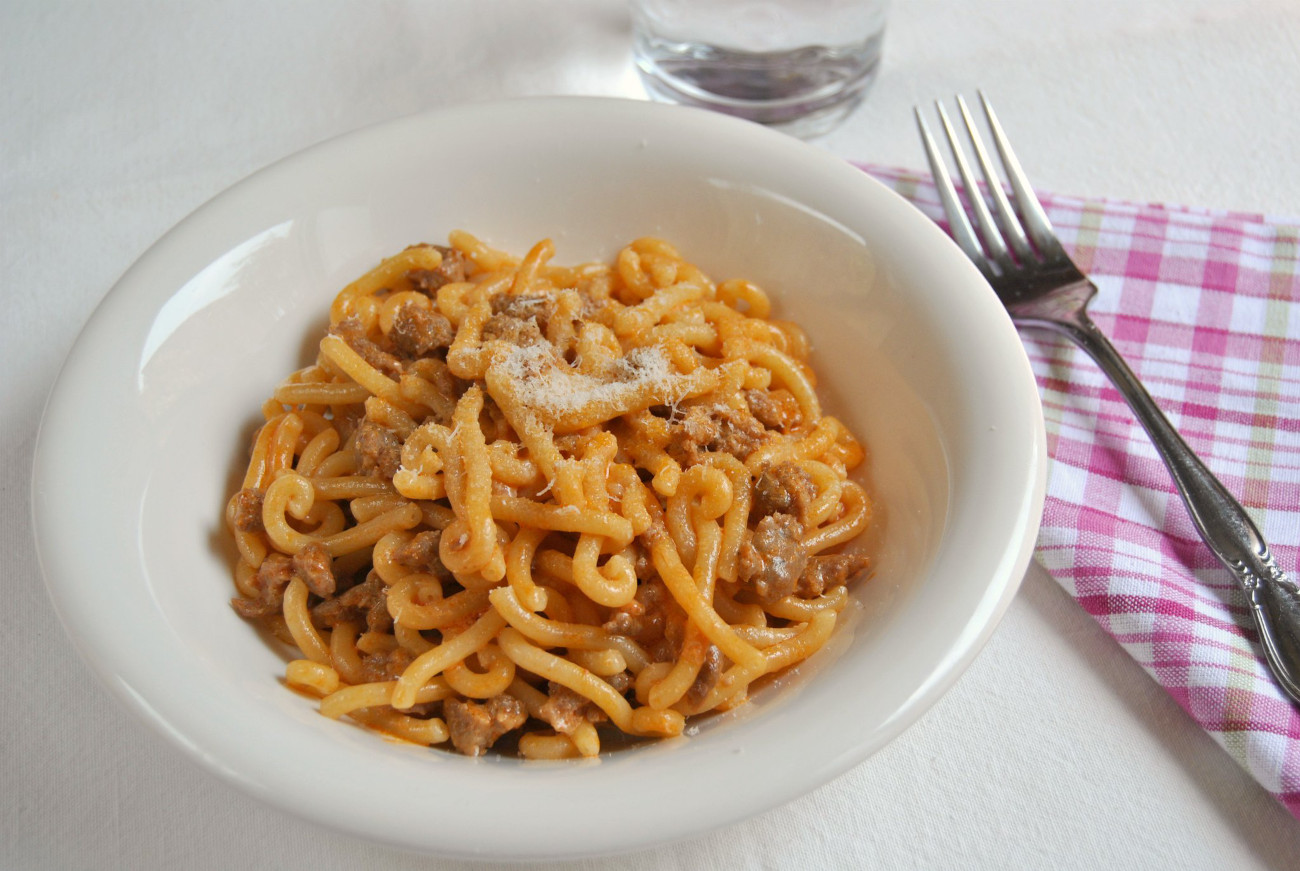Penne, fusilli, rigatoni, and spaghetti — when we hear these pasta names, it’s easy to visualize them, but there is a world of pasta shapes just waiting to be cooked. Below are some weird pasta shapes and ways of cooking them with the perfect complimentary sauce.
Candele

Candele isn’t made in every part of Italy, and in fact, this pasta is specific to southern Italy’s Campania region. Like many pasta shapes taking inspiration from everyday life, the name candele (candle) refers to the long and skinny candles used in Catholic religious processions. And when I mean long, this pasta is long, coming in at almost 50 centimeters (that’s almost 20 inches) in length. Generally, breaking your pasta is a culinary no-no, but candele is the exception to the rules because it’s one of the few kinds of pasta you’re supposed to snap into pieces before cooking. Candele works best with heavy and thick tomato sauces with meat or mushrooms. This type of pasta is also great in baked pasta dishes with lots (and I mean LOTS) of cheese.
Paccheri

Paccheri almost looks like a cannelloni in essence, but they are shorter and much wider than your average tube-shaped pasta. You may see this pasta with two different names, schiaffoni, and paccheri, but they both mean the same thing — to slap or hit with an open hand. Paccheri, derived from the term una pacca, is just the dialectical term specific to Naples. You see more paccheri dishes in Naples, and you can understand why it’s popular — its thick size and shape mean you don’t have to eat a lot to get full, perfect for working class families of the time. This pasta also stretches out the sauce and holds its ground under the weight of plenty of toppings. You can bake them almost like you’d bake a lasagna, smothered in a meat sauce, or stuffing them with ricotta or other cheeses for a delicious al forno dish.
Creste de Gallo

Creste de Gallo, or comb of the rooster (if you were in the middle ages, it was a slang term for a fool), looks like elbow macaroni, but this pasta has a curly wavy spine and a ridged body. Some legends say it comes from Florence, other people say the fresh version is produced in Marche, but you’ll find this shape across all of Italy. Ironically, this pasta is served with a lot of chicken, but it is one of the most universally produced and versatile pasta shapes around and goes with any sauce you choose.
Trofie

Trofie calls Liguria and also Genova, both seaport regions, its homes. Supposedly, the shape gets its name from the twisting rubbing motion that’s required to make the pasta. Trofie pasta does best with the regionally famous basil pesto, but it is paired with seafood, which is also a steadfast staple in these regions.
Malloreddus

Malloreddus pasta is also called Sardinian gnocchetti, just think gnocchi but even smaller. Though they have a pillowy-like quality, unlike other gnocchi, malloreddus have a sort of space in the center of each pasta, perfect for holding sauce. The name refers to the Sardinian dialectical term of a calf that has a soft pot-belly shape. With a cavity in the center and a grooved exterior, malloreddus is generally always paired with a tomato-based ragu made of vegetables or meat.
Graminga

Graminga doesn’t have the clearest origins, but Emilia-Romagna definitely has incorporated it into this regionally specific culinary repertoire. Supposedly, curly twisty pasta is named after regional weeds, and looking at its shape, it is easy to visualize the similarity. Even though graminga is usually paired with sausage, you can also find it with light and refreshing greens and pea-based sautees.
All of these kinds of pasta come in a dried form, so when you see one of any of these shapes in your local store, grab a bag and cook some of these unique pasta for yourself.













